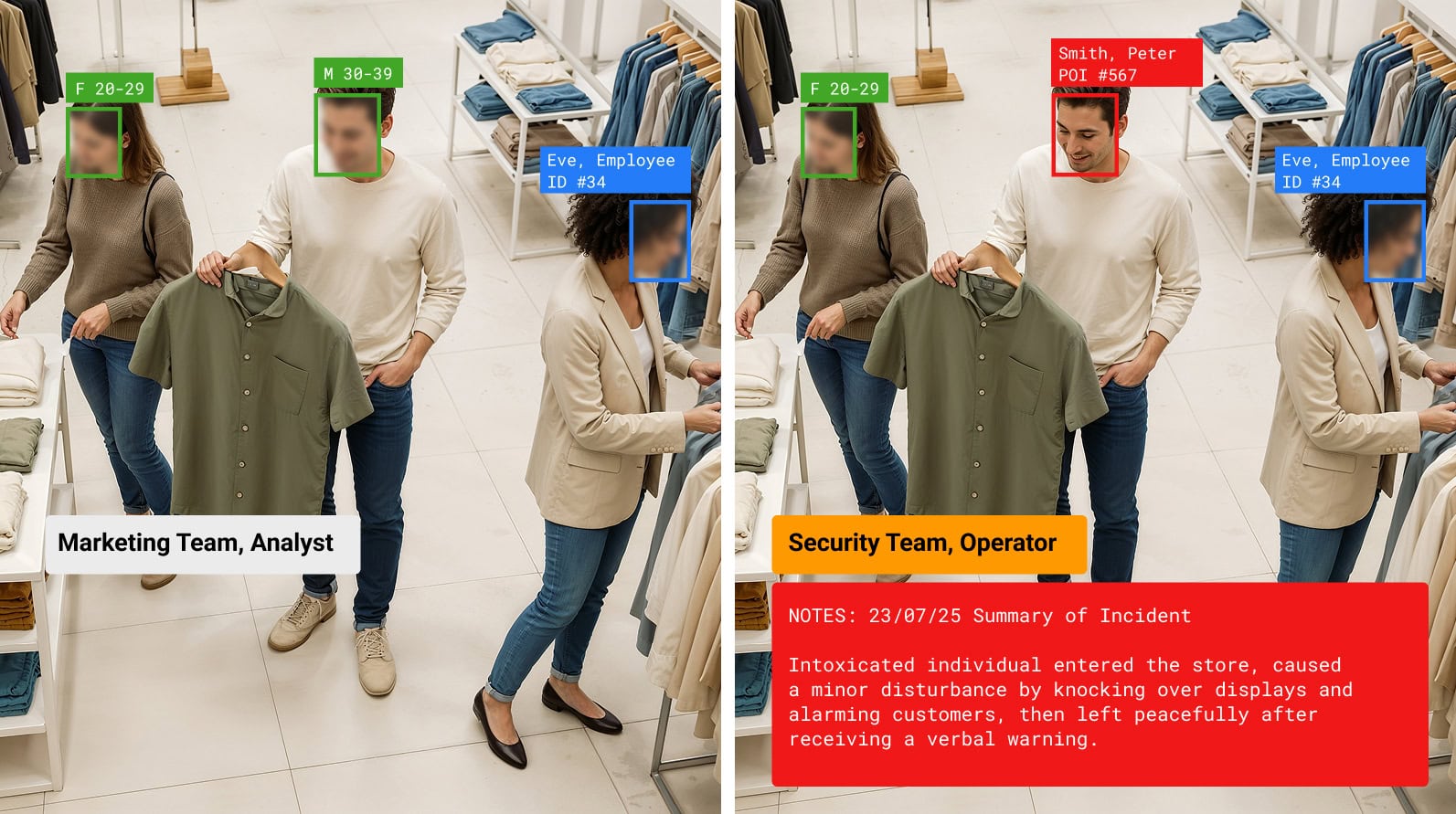When I talk about facial intelligence, I don’t just think about identification. I think about how it can empower the right people, protect the public, and do it all while respecting privacy. That’s the lens I bring to every product decision.
Lately, I’ve been having a lot of conversations with customers, across Europe, the U.S., South America, and Asia, who are deploying Corsight in very different environments. Transit authorities, government agencies, retail security teams, they’re all telling me the same thing: They need facial recognition that’s not only accurate, but built to respect internal boundaries, where different teams can access just what they need, nothing more. The tech has to adapt to how they operate, not the other way around. That’s exactly what’s been driving our latest product update.
Introducing: Role-Based Access Control
One of the things I’m personally most excited about is a new feature we just released: Role-Based Access Control.
Here’s the idea. When two people are watching the same live feed, they shouldn’t necessarily see the same thing. Based on their role, one user might see a fully identified individual, name, metadata, alert status, while another sees only anonymized info, like “Unknown” or “Customer #8724.”
I’ve seen this solve real operational challenges.
Example 1: Smarter Collaboration in Law Enforcement
In a recent deployment at a busy transit hub, the national security team had full access to identity data. Local police officers, monitoring the same cameras, saw only anonymized views unless escalation was needed. That separation helped protect sensitive intelligence while still letting both teams respond quickly and efficiently.
Example 2: Privacy-Conscious Monitoring in Retail
One of our large retail customers needed a way to let their marketing team analyze customer behavior patterns without giving them access to identity data. Meanwhile, their loss prevention team did need full visibility when security events were triggered. Role-Based Access Control gave them both exactly what they needed, no more, no less.
Why It Matters
This isn’t a “nice-to-have” feature, it came directly out of customer feedback. I kept hearing the same thing: “We need to control what different teams can see, without slowing anyone down.”
So, we built it with these core goals in mind:
- Privacy by design: Identities are masked by default unless access is explicitly needed.
- Focused workflows: People only see the data relevant to their job.
- Compliance support: Makes it easier to align with regulations like GDPR, HIPAA, etc.
- Audit readiness: You can track exactly who accessed what, and when.
From my point of view, this kind of role-aware functionality is where facial recognition needs to go next, especially if we want it to scale responsibly.
Looking Ahead
My team is moving fast, but we don’t cut corners. Every feature we ship has to solve a real-world problem, and it has to do it in a way that respects the end user and the people being observed.



